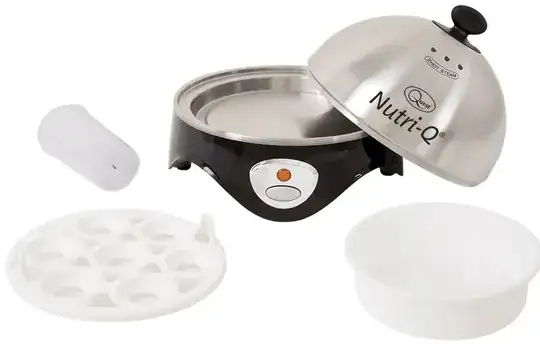These egg cookers work by simply heating the water until it all evaporates. Most cookers sense when all the water is evaporated, and automatically turn off and/or alerting with a beep or noise. They have a sensor under the hot plate that detects temperature. When water is still in the pan, it keeps the pan cool, and when water evaporates completely the pan bottom will start to get hotter.
The water is heated in the pan in the bottom, works it way past the eggs, and eventually out the holes in the lid.
So why more water for fewer eggs?
The tray that holds the eggs has a bunch of holes in it. Each egg cup has a hole in the bottom so that the steam has direct contact with the bottom of the egg. When the tray is full, it reduces the number of outlets and traps more steam under the tray. Similar to putting a lid on a pot, this reduces the speed of evaporation.
With only one egg blocking one hole, the steam can escape more readily out from the bottom of the tray to the top, and steam will escape out into the room more quickly.
To compensate for the fact that steam is escaping the egg cooker slightly faster when there are fewer eggs, you use slightly more water when there are fewer eggs.
A fun experiment
You could use eggs (or a heat proof substitute... Maybe something ping pong ball or golf ball sized (but not ping pong balls--they melt at 80°C)) to block off the "egg holes" and collect a series of timings for how long it takes for all the water to evaporate as you vary the number of eggs & water.
You should find that when you follow package directions, the timing of the cycle is approximately the same.
Similarly, if you use only one egg, and the "6/7 egg" water amount, you'll find the cycle (and complete water evaporation) faster than the full "1 egg" water amount. Again, this is just because there's an easier path for the steam to escape.
